Do you have a question about the Samsung LN23R71B and is the answer not in the manual?
Highlights the key capabilities and technologies of the TV, such as adjustable picture settings and SRS TruSurround XT.
Lists and visually identifies the standard accessories that come with the LCD TV, like the remote control and power cord.
Details the function and operation of each button located on the lower-right part of the TV panel.
Illustrates and explains the various input/output jacks found on the rear panel of the TV for connecting external devices.
Describes the AV IN 2 and Headphone jacks located on the side panel for occasional use with camcorders or audio devices.
Explains the purpose and usage of each button on the TV's remote control for various operations.
Provides step-by-step instructions for installing batteries into the remote control for proper operation.
Guides on connecting VHF, UHF, and separate antennas using appropriate adapters or combiners.
Details procedures for connecting cable TV without a box, with a descrambler, or for channels requiring a splitter.
Explains how to connect a VCR using standard video and audio cables for viewing tapes.
Guides on using an S-Video cable for a higher quality picture connection from a VCR.
Instructions for connecting a camcorder to the TV's side panel jacks to view tapes without a VCR.
Details connecting DVD players and set-top boxes using component video and audio inputs.
Explains how to connect external devices with HDMI output to the TV's HDMI input for digital signal transmission.
Details connecting external devices with DVI output using a DVI to HDMI cable or adapter.
Provides instructions for connecting audio amplifiers or DVD home theaters to the TV's audio output.
Guides on connecting a computer via D-Sub or HDMI/DVI cables for use as a display.
Explains how to power the TV on and off using the remote control or the front panel button.
Details the initial automatic setup process, including language and home mode selection.
Describes how to change channels using the CH buttons and the PRE-CH button for quick switching.
Explains how to increase/decrease volume using VOL buttons and how to mute/unmute the sound.
How to use the INFO button to view the current channel, sound type, and picture settings.
Explains how to access and navigate the main TV menus using the MENU and navigation buttons.
Specifies the signal source (Air, STD, HRC, IRC) before memorizing channels.
Details the process of automatically scanning and memorizing available channels for easy access.
Instructions for programming the remote control to operate a VCR using specific codes.
Instructions for programming the remote control to operate a cable box using specific codes.
Instructions for programming the remote control to operate a DVD player using specific codes.
Instructions for programming the remote control to operate a Set-Top Box (STB) using specific codes.
A comprehensive list of brands and their corresponding codes for programming the remote to control VCRs.
A list of cable box brands and their associated codes for remote control setup.
A comprehensive list of DVD player brands and their corresponding codes for remote control programming.
A list of Set-Top Box (STB) brands and their associated codes for remote control setup.
Guides on choosing the correct input source (TV, AV, PC, HDMI, etc.) for external devices connected to the TV.
Explains how to rename input sources to easily identify connected devices like VCRs or DVD players.
Details the preset picture modes (Dynamic, Standard, Movie) and how to activate them.
How to modify the color balance of the screen by selecting different color tones.
Restores all picture settings to their original factory default values.
Describes the Digital Natural Image engine (DNIe) feature for enhanced image detail and noise reduction.
Guides on selecting different screen sizes like 16:9, Zoom, 4:3, and Just Scan for optimal viewing.
Adjusts the black level for HDMI connections to enhance screen depth and contrast.
Explains how to activate and use the Picture-in-Picture (PIP) feature to watch two video sources simultaneously.
How to choose the signal source for the sub picture (PIP) based on the main picture's source.
Guides on selecting the desired TV channel to display within the PIP window.
Explains how to adjust the position of the PIP window on the screen.
Details how to adjust the size of the PIP window for better viewing.
Guides on manually adjusting sound settings using the equalizer for personalized audio preferences.
Details preset sound modes (Standard, Music, Movie, Speech, Custom) for different viewing scenarios.
Configures the SRS TruSurround XT feature for a virtual surround sound experience.
Guides on selecting audio tracks such as Mono, Stereo, or Separate Audio Program (SAP).
Reduces volume differences between broadcasters by automatically adjusting the volume level.
Explains how to mute the TV speakers, useful when listening through an external sound system.
Allows listening to the audio from the sub picture (PIP) when the PIP feature is active.
Restores all sound settings, including equalizer, to their factory default values.
Guides on connecting headphones to the TV and notes on volume adjustment and sound output.
Allows users to add or delete channels to customize the displayed channel list.
Prevents unauthorized users, like children, from watching unsuitable programs by locking channels.
Adjusts reception for specific analog channels to achieve optimal picture and sound quality.
Selects the TV's color system (Auto, PAL-M, PAL-N, NTSC) for best reception with various broadcast signals.
Guides on setting up PC software (Windows XP) to use the TV as a computer monitor.
Lists supported resolutions, frequencies, and pixel clocks for D-Sub and HDMI/DVI PC inputs.
Automatically adjusts video signals, frequency, and position for optimal PC display.
Reduces picture noise and adjusts screen quality by selecting 'Coarse' or 'Fine' tuning.
Adjusts the horizontal and vertical position of the image when using the TV as a PC monitor.
Resets the screen position and color settings to their default values for PC display.
Provides instructions for manually setting the TV's internal clock for timer functions.
Configures the TV to automatically shut off after a preset time interval.
Allows setting timers for automatic power on and power off of the TV.
Guides on changing the language displayed in the TV's on-screen menus.
Controls the display of a blue screen when no signal is received or the signal is weak.
Optimizes TV settings for a more realistic gaming experience when connected to consoles.
Configures a melody sound to play when the TV is powered on or off.
Reduces static and ghosting on the screen caused by weak broadcast signals.
Instructions on how to enable and view on-screen text messages (closed captions) for analog channels.
Adjusts TV brightness to reduce power consumption and eye fatigue, especially at night.
Selects the appropriate color system (Auto, PAL-M, PAL-N, NTSC) for optimal picture quality.
Provides a list of common TV problems and their possible solutions for self-troubleshooting.
Step-by-step instructions for attaching the TV stand to the television set.
Instructions for safely removing the TV stand from the television.
Details the VESA mounting hole patterns, screw sizes, and compatible TV sizes for wall mounting.
Explains how to use a Kensington lock to physically secure the TV in public places.
Highlights the key capabilities and technologies of the TV, such as adjustable picture settings and SRS TruSurround XT.
Lists and visually identifies the standard accessories that come with the LCD TV, like the remote control and power cord.
Details the function and operation of each button located on the lower-right part of the TV panel.
Illustrates and explains the various input/output jacks found on the rear panel of the TV for connecting external devices.
Describes the AV IN 2 and Headphone jacks located on the side panel for occasional use with camcorders or audio devices.
Explains the purpose and usage of each button on the TV's remote control for various operations.
Provides step-by-step instructions for installing batteries into the remote control for proper operation.
Guides on connecting VHF, UHF, and separate antennas using appropriate adapters or combiners.
Details procedures for connecting cable TV without a box, with a descrambler, or for channels requiring a splitter.
Explains how to connect a VCR using standard video and audio cables for viewing tapes.
Guides on using an S-Video cable for a higher quality picture connection from a VCR.
Instructions for connecting a camcorder to the TV's side panel jacks to view tapes without a VCR.
Details connecting DVD players and set-top boxes using component video and audio inputs.
Explains how to connect external devices with HDMI output to the TV's HDMI input for digital signal transmission.
Details connecting external devices with DVI output using a DVI to HDMI cable or adapter.
Provides instructions for connecting audio amplifiers or DVD home theaters to the TV's audio output.
Guides on connecting a computer via D-Sub or HDMI/DVI cables for use as a display.
Explains how to power the TV on and off using the remote control or the front panel button.
Details the initial automatic setup process, including language and home mode selection.
Describes how to change channels using the CH buttons and the PRE-CH button for quick switching.
Explains how to increase/decrease volume using VOL buttons and how to mute/unmute the sound.
How to use the INFO button to view the current channel, sound type, and picture settings.
Explains how to access and navigate the main TV menus using the MENU and navigation buttons.
Specifies the signal source (Air, STD, HRC, IRC) before memorizing channels.
Details the process of automatically scanning and memorizing available channels for easy access.
Instructions for programming the remote control to operate a VCR using specific codes.
Instructions for programming the remote control to operate a cable box using specific codes.
Instructions for programming the remote control to operate a DVD player using specific codes.
Instructions for programming the remote control to operate a Set-Top Box (STB) using specific codes.
A comprehensive list of brands and their corresponding codes for programming the remote to control VCRs.
A list of cable box brands and their associated codes for remote control setup.
A comprehensive list of DVD player brands and their corresponding codes for remote control programming.
A list of Set-Top Box (STB) brands and their associated codes for remote control setup.
Guides on choosing the correct input source (TV, AV, PC, HDMI, etc.) for external devices connected to the TV.
Explains how to rename input sources to easily identify connected devices like VCRs or DVD players.
Details the preset picture modes (Dynamic, Standard, Movie) and how to activate them.
How to modify the color balance of the screen by selecting different color tones.
Restores all picture settings to their original factory default values.
Describes the Digital Natural Image engine (DNIe) feature for enhanced image detail and noise reduction.
Guides on selecting different screen sizes like 16:9, Zoom, 4:3, and Just Scan for optimal viewing.
Adjusts the black level for HDMI connections to enhance screen depth and contrast.
Explains how to activate and use the Picture-in-Picture (PIP) feature to watch two video sources simultaneously.
How to choose the signal source for the sub picture (PIP) based on the main picture's source.
Guides on selecting the desired TV channel to display within the PIP window.
Explains how to adjust the position of the PIP window on the screen.
Details how to adjust the size of the PIP window for better viewing.
Guides on manually adjusting sound settings using the equalizer for personalized audio preferences.
Details preset sound modes (Standard, Music, Movie, Speech, Custom) for different viewing scenarios.
Configures the SRS TruSurround XT feature for a virtual surround sound experience.
Guides on selecting audio tracks such as Mono, Stereo, or Separate Audio Program (SAP).
Reduces volume differences between broadcasters by automatically adjusting the volume level.
Explains how to mute the TV speakers, useful when listening through an external sound system.
Allows listening to the audio from the sub picture (PIP) when the PIP feature is active.
Restores all sound settings, including equalizer, to their factory default values.
Guides on connecting headphones to the TV and notes on volume adjustment and sound output.
Allows users to add or delete channels to customize the displayed channel list.
Prevents unauthorized users, like children, from watching unsuitable programs by locking channels.
Adjusts reception for specific analog channels to achieve optimal picture and sound quality.
Selects the TV's color system (Auto, PAL-M, PAL-N, NTSC) for best reception with various broadcast signals.
Guides on setting up PC software (Windows XP) to use the TV as a computer monitor.
Lists supported resolutions, frequencies, and pixel clocks for D-Sub and HDMI/DVI PC inputs.
Automatically adjusts video signals, frequency, and position for optimal PC display.
Reduces picture noise and adjusts screen quality by selecting 'Coarse' or 'Fine' tuning.
Adjusts the horizontal and vertical position of the image when using the TV as a PC monitor.
Resets the screen position and color settings to their default values for PC display.
Provides instructions for manually setting the TV's internal clock for timer functions.
Configures the TV to automatically shut off after a preset time interval.
Allows setting timers for automatic power on and power off of the TV.
Guides on changing the language displayed in the TV's on-screen menus.
Controls the display of a blue screen when no signal is received or the signal is weak.
Optimizes TV settings for a more realistic gaming experience when connected to consoles.
Configures a melody sound to play when the TV is powered on or off.
Reduces static and ghosting on the screen caused by weak broadcast signals.
Instructions on how to enable and view on-screen text messages (closed captions) for analog channels.
Adjusts TV brightness to reduce power consumption and eye fatigue, especially at night.
Selects the appropriate color system (Auto, PAL-M, PAL-N, NTSC) for optimal picture quality.
Provides a list of common TV problems and their possible solutions for self-troubleshooting.
Step-by-step instructions for attaching the TV stand to the television set.
Instructions for safely removing the TV stand from the television.
Details the VESA mounting hole patterns, screw sizes, and compatible TV sizes for wall mounting.
Explains how to use a Kensington lock to physically secure the TV in public places.
| Screen Size | 23 inches |
|---|---|
| Display Technology | LCD |
| Resolution | 1366 x 768 |
| Aspect Ratio | 16:9 |
| Brightness | 500 cd/m² |
| Contrast Ratio | 3000:1 |
| Response Time | 8 ms |
| HDMI Ports | 1 |
| Component Video Inputs | 1 |
| Composite Video Inputs | 1 |
| Input Ports | HDMI, Component, Composite |
| Viewing Angle | 178°/178° |
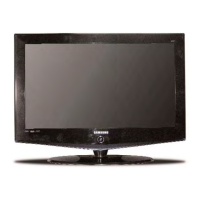


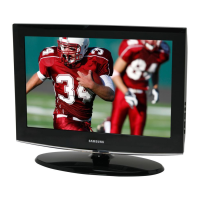





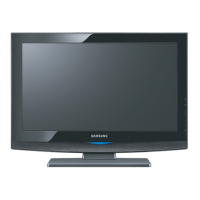
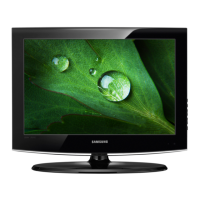
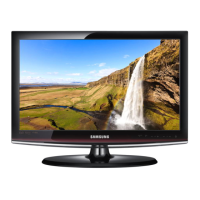
